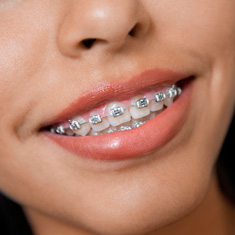Tooth Decay
Unlike a tooth infection which already has caused an excessive amount of damage, tooth decay is the process by which bacteria erodes the teeth. There are many different stages of tooth decay, and as we age it is somewhat inevitable to avoid. However, through oral health routines and dental check-ups tooth decay can be managed to extremely minimal levels keeping teeth white and bright for years.
Tooth decay is damage that occurs when bacteria from foods and other sources combine to make acids that eat away tooth and gum tissue. Because we cannot avoid eating, we can only manage how decay develops within our mouth. If left untreated, tooth decay can lead to cavities and gum disease. Disease and cavities can cause pain, infection, and eventually tooth loss. The deeper tooth decay is allowed to grow the more damage is caused. If significant damage is occurring, overall health may be in jeopardy as well - even life-threatening in some cases.
Parts of the Tooth
- The hard outer layer is called enamel. The enamel protects the center of the teeth and enables us to penetrate food substances.
- The middle layer is called dentin. Dentin is also a harder layer that supports the enamel
- The center of the tooth is called the pulp. It contains nerves and blood vessels for the tooth.
What causes tooth decay?
Bacteria is the primary cause for tooth decay. A clear, sticky substance called plaque forms on your teeth and gums as bacteria combine with the foods you eat. As plaque develops, it creates acids that decay the teeth and gums. Plaque can be removed daily by brushing and flossing. However, If plaque is left on the teeth for extended periods of time the acids that are housed by the plaque are able to erode more the of the tooth and gum tissue. Over time, these acids destroy enough tooth enamel and gum tissue, known as tooth decay.
Things that make you more likely to have tooth decay include:
- Not brushing and flossing your teeth regularly
- Not seeing a dentist for checkups and cleanings
- Eating foods that are high in sugar and other carbohydrates.
- Not getting enough fluoride
- Not having enough saliva
- Having diabetes
- Smoking and secondhand smoke. Your children become at more risk of tooth decay from secondhand smoke.
- Treatment for Tooth Decay
- The easiest treatment for tooth decay is prevention and begins at home. Keeping up with a regular oral health routine helps prevent tooth decay from spreading. Helping your children form good oral habits early on will also help them keep their teeth longer and brighter. Dental checkups will also ensure hard to reach or hard to remove plaque and tartar is also removed.
- If tooth decay has already damaged much of a tooth or gums, the treatment options vary deepening on the severity of the decay, the area of decay and the age of the patient. If your child is experiencing oral discomfort or pain or has any of the symptoms listed here, please come see us and we'll ensure the best possible care for your child.




